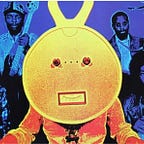John Coltrane a jazzman addicted to drugs then touched by the grace of God
“Jazz is in my opinion an expression of the highest ideals. Therefore, it contains brotherhood. And I believe that with brotherhood there would be no poverty, no war. “John Coltrane
John Coltrane aka Trane was an American saxophonist born in Hamlet, North Carolina on September 23, 1926. Despite the brevity of his career, the pioneer influenced the history of jazz, surpassing the limits in place in terms of technique, sound, timbre, dynamics…
A promising start
Considered one of the most influential saxophonists of the 20th century, John Coltrane came from a musical family, his father John Robert Coltrane being an amateur violinist and ukulele player. His mother, Alice Blair, studied music at Livingstone College and played piano in a choir.
At the age of twelve, John Coltrane lost his father, his grandfather Reverend Blair and his uncle. His mother had to find a job to support herself. As for John Coltrane, he joined Reverend Steele’s community ensemble as a clarinet player.
Three years later in 1942, at the age of 15, he played music in his school ensemble, first on clarinet, then on alto saxophone (he was inspired by Lester Young and Johnny Hodges). The following year he graduated from high school and moved to Philadelphia to continue his studies. He made his first stage appearance at the age of eighteen in Jimmy Johnson’s ensemble before being transferred to the Navy in Hawaii for military service. There he made his first recording.
On his return, John Coltrane played viola with King Kolax’s ensemble for a while before joining Eddie “Cleanhead” Vinson’s band on tenor, an instrument he played for the first time. He gradually abandoned his alto saxophone for the tenor, convinced that the idol in place, Charlie Parker, had already tapped all the possibilities of the tenor.
A fantastic musician plagued by drugs
In 1948, he played in Jimmy Heath’s ensemble, before joining Dizzy Gillespie’s large ensemble the following year. Dizzy Gillespie disbanded his band some time later, but impressed by the saxophonist’s talent, invited him to join his new group. John Coltrane was unreliable, missed several appointments and was fired from the group.
With no training and no money, he returned to Philadelphia and played in various bands and bars to support himself. He toured with Earl Bostic’s band in California and met musician Eric Dolphy. He was to have a decisive influence on his life. At this time, alcohol and drugs (especially heroin) abounded in John’s life. Off stage, the saxophonist’s life is constantly turned upside down, he rambles…
He found a home in the philosophy and spirituality of the East through the saxophonist Yusef Lateef.
On 2 July 1955, Coltrane left Hodges’ band, his first model, and received an invitation from Miles Davis, with whom he had previously collaborated. He was about to form a new quintet and wanted John to be part of it!
With Trane on saxophone, Philly Joe on drums, Red Garland on piano, Paul Chambers on bass and Miles on trumpet, the music of the Miles Quintet quickly became incredible. Trane turned into a diamond in the rough, but the fall was never far away. In 1957 Miles replaced him with Sonny Rollins, again because of his alcohol and drug problems. Trane returned from New York to Philadelphia with his family.
John Coltrane’s addiction seemed unstoppable… until he was touched by grace!
“During 1957 I experienced, thanks to God, a spiritual awakening that led to a richer, fuller, more productive life. At that time, I humbly asked that I be given the means and the privilege to make people happy through music.
Overcoming his drug addiction, Trane felt he had a mission, worked with the genius Thelonious Monk and developed his style. A dense, sound-saturated style. Clean, he rejoined Miles Davis’ band and recorded the masterpieces Milestones and Kind of Blue with the Miles Davis sextet.
He recorded his first album as a leader in 1959, Giant Steps. His style was avant-garde, disruptive and sometimes unaccepted, as during the sextet’s concert at the Olympia in Paris. Not all audiences were yet ready for his revolution, John Coltrane was too far ahead of his time, his work would be seen to be worthwhile. Olé, My Favorite Things is the quintessential Coltranian work.
During the last period of his short career, Coltrane became interested in free jazz and became one of its spiritual fathers. In the years that followed, Coltrane revealed all his power and was better received by European audiences. He multiplied his collaborations and masterpieces until, in 1964, he recorded one of the most important albums in the history of jazz, A Love Supreme. It was an immediate commercial success, making Trane the leader of modern jazz.
Coltrane integrated young musicians such as Archie Shepp and Pharoah Sanders. The young generation helps him to keep up with the times and to keep the innovative spirit alive. John Coltrane tried out new currents, new musical directions… He would not cease to pursue the mission that the almighty had summoned him to, until his death on July 17, 1967, of an acute liver infection.
John Coltrane, Grand Master of the jazz saxophone…
